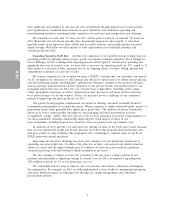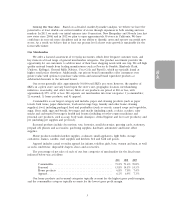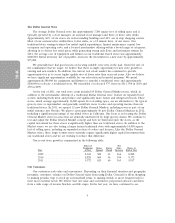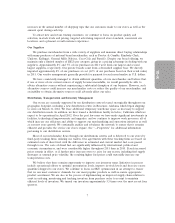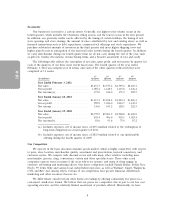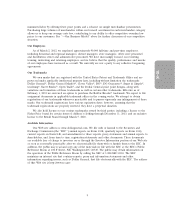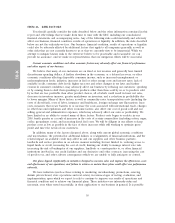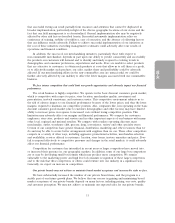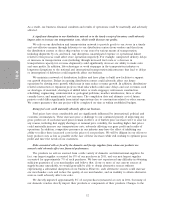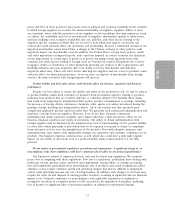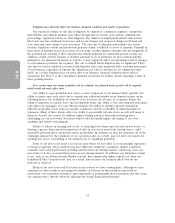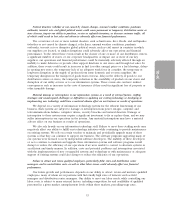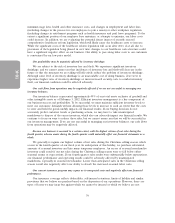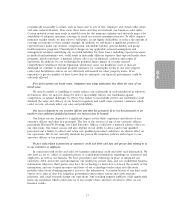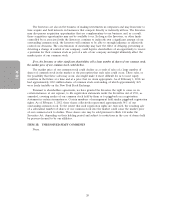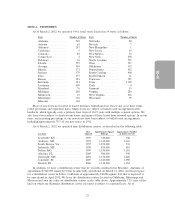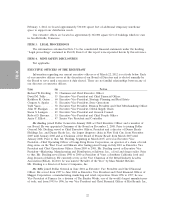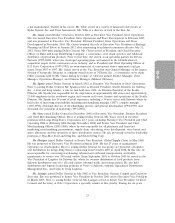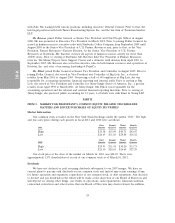Dollar General 2011 Annual Report Download - page 114
Download and view the complete annual report
Please find page 114 of the 2011 Dollar General annual report below. You can navigate through the pages in the report by either clicking on the pages listed below, or by using the keyword search tool below to find specific information within the annual report.
10-K
Litigation may adversely affect our business, financial condition and results of operations.
Our business is subject to the risk of litigation by employees, consumers, suppliers, competitors,
shareholders, government agencies and others through private actions, class actions, administrative
proceedings, regulatory actions or other litigation. The number of employment-related class actions
filed each year has continued to increase, and recent changes and proposed changes in Federal and
state laws may cause claims to rise even more. The outcome of litigation, particularly class action
lawsuits, regulatory actions and intellectual property claims, is difficult to assess or quantify. Plaintiffs in
these types of lawsuits may seek recovery of very large or indeterminate amounts, and the magnitude of
the potential loss relating to these lawsuits may remain unknown for substantial periods of time. In
addition, certain of these lawsuits, if decided adversely to us or settled by us, may result in liability
material to our financial statements as a whole or may negatively affect our operating results if changes
to our business operations are required. The cost to defend future litigation may be significant. There
also may be adverse publicity associated with litigation that could negatively affect customer perception
of our business, regardless of whether the allegations are valid or whether we are ultimately found
liable. As a result, litigation may adversely affect our business, financial condition and results of
operations. See Note 9 to the consolidated financial statements for further details regarding certain of
these pending matters.
If we cannot open new stores profitably and on schedule, our planned future growth will be impeded,
which would adversely affect sales.
Our ability to open profitable new stores is a key component of our planned future growth. Our
ability to timely open such stores and to expand into additional market areas depends in part on the
following factors: the availability of attractive store locations; the absence of occupancy delays; the
ability to negotiate acceptable lease and development terms; the ability to hire and train new personnel,
especially store managers, in a cost effective manner; the ability to identify customer demand in
different geographic areas; general economic conditions; and the availability of sufficient funds for
expansion. Many of these factors affect our ability to successfully relocate stores as well, and many of
them are beyond our control. In addition, tighter lending practices may make financing more
challenging for our real estate developers which could potentially impact the timing of our store
openings and build-to-suit program.
Delays or failures in opening new stores, or achieving lower than expected sales in new stores, or
drawing a greater than expected proportion of sales in new stores away from existing stores, could
materially adversely affect our growth and/or profitability. In addition, we may not anticipate all of the
challenges imposed by the expansion of our operations and, as a result, may not meet our targets for
opening new stores, remodeling or relocating stores or expanding profitably.
Some of our new stores may be located in areas where we have little or no meaningful experience
or brand recognition. Those markets may have different competitive conditions, market conditions,
consumer tastes and discretionary spending patterns than our existing markets, which may cause our
new stores to be less successful than stores in our existing markets. In addition, our alternative format
stores, such as our Dollar General Market concept, have significantly higher capital costs than our
traditional Dollar General stores, and, as a result, may increase our financial risk if they do not
perform as expected.
Many of our new stores will be located in areas where we have existing units. Although we have
experience in these markets, increasing the number of locations in these markets may result in
inadvertent over-saturation of markets and temporarily or permanently divert customers and sales from
our existing stores, thereby adversely affecting our overall financial performance.
14


